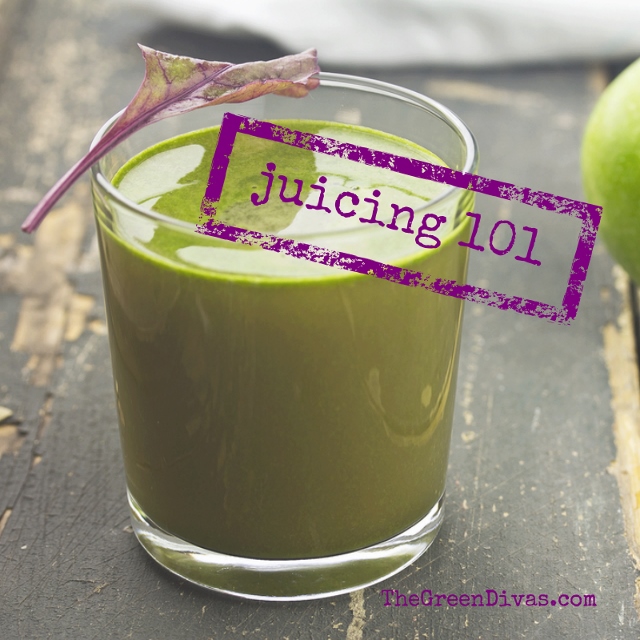This post was written by our newest Green Diva contributor, Kate Bartolotta, to accompany her Green Divas Foodie-Phile segment. Listen to this interesting Green Divas Foodie-Phile segment about juicing, then read on to learn lots more about what juicing is (and isn’t) AND get a delicious green juice recipe!
Juice fasts and detoxes are popular everywhere lately, but with that popularity comes many misconceptions.
To make help clear up some of these misconceptions, I’ve broken it down into what juicing is… and what it’s not.
Juicing is:
1. A way to get a concentrated burst of plant-based nutrients.
Even for those of us that focus on whole foods in our diet, it’s tough to get all of our nutritional needs met through our diets alone. This is a great way to get in several more vegetable and fruit servings in during the day.
2. A way to help our body recuperate and heal from environmental toxins, as well as sub-eating habits.
Many detractors of juicing claim that the body already detoxifies itself. While this is true to a large extent, our bodies aren’t built to handle the amount of toxins we are currently exposed to—environmentally and nutritionally. Juicing is a great way to simplify nutrition for a short period time and let the body heal.
3. A wonderful tool in our wellness tool box to help satisfy cravings in a healthy way.
If you’re adding green juice in the morning and eating junk the rest of the day, you won’t reap many of its benefits. It’s a wonderful tool to add to your wellness regime, but it’s just one tool. It can, however, help you retrain your palette. Craving sweets is not a problem, but satisfying that craving with non-stop sugar is! Attuning our tastes to foods that are naturally sweet can go a long way towards supporting healthy choices the rest of the day.
Juicing is not:
1. A quick weight-loss fix.
A juice fast may result in a shift of weight—up or down—and this is largely due to loss of waste and water. It’s a great tool to use to jump start or re-start healthy eating habits, but not if you take a few days off from eating junk and then resume immediately post-juicing. Barring a health care professional’s supervised plan, extensive juice fasting is not the way to optimal health or weight loss.
2. A replacement for eating whole foods.
While taking a few days off for a complete juice fast can be helpful periodically, it is best supported by the ongoing inclusion of whole foods in our diets. In the day to day routine, starting off with a green juice or smoothie is a wonderful way to set the tone for your day by hydrating and getting a boost of plant-based nutrients. Juicing is not a Band-aid for underlying bad habits, but it can be a powerful addition to an already health diet—or for those in the midst of dietary transition.
Another consideration for those beginning to juice is the sugar content of your juice ingredients. For most people, the optimal juice to add to your day is a green juice that includes mainly lower-GI fruits and vegetables.
“Let your food be your medicine, and your medicine be your food.”
Hippocrates
Here’s a delicious green juice recipe!
Have your own favorite juicing recipe? Please share it in the comments.
[yumprint-recipe id=’26’]
Main juice image via shutterstock.

Pingback: 3 Healthy & Energizing Coffee Alternatives | Care2 Healthy Living